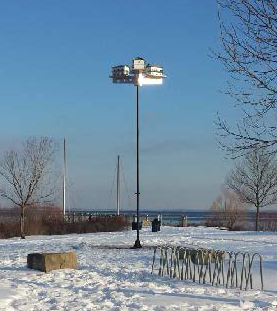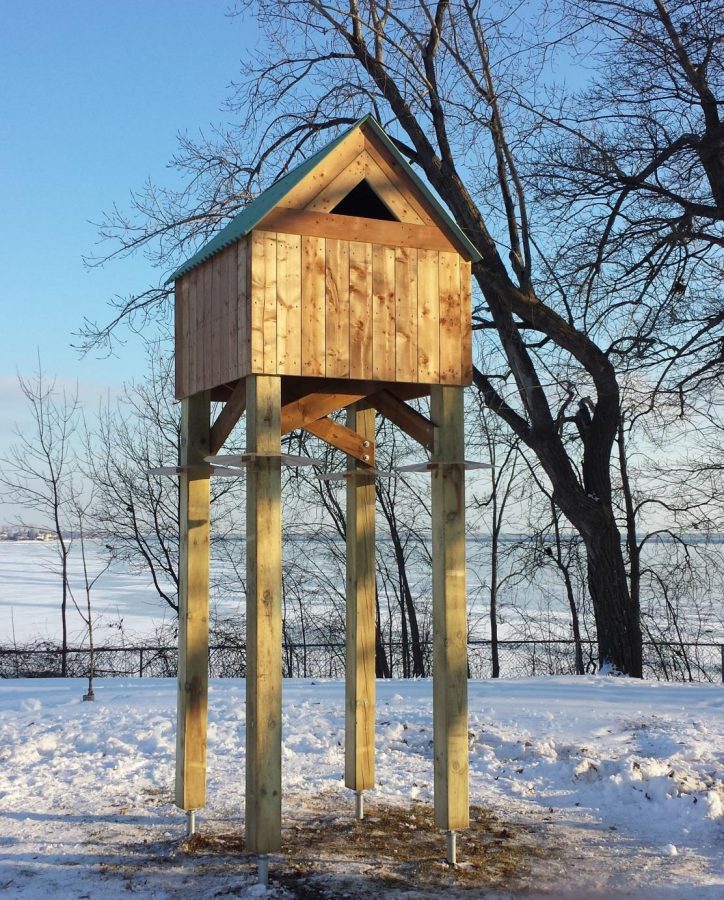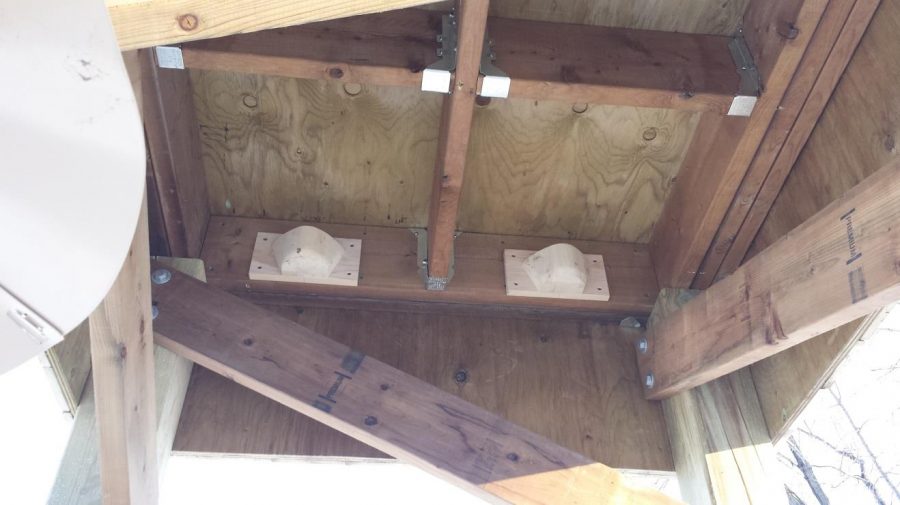| Environmental Columns
Pointe-Claire is taking concrete actions for biodiversity: Swallows are a case in point
City of Pointe-Claire experts took a number of steps last summer in the Grande-Anse Park to improve the living environment of barn swallows and purple martins while also eliminating the inconveniences they were causing for chalet visitors.
The proximity of the barn swallow nests to the chalet entrance was an irritation for users because the birds were constantly flying overhead or depositing their droppings and forming piles of excrement known as guano on the balcony of the chalet.
The bird nests at the entrance to the Grande-Anse Park chalet were built by barn swallows. Prior to colonization, these birds made their nests in caves, holes and crevices. Now they take advantage of human structures, such as barns or attics, where they make their nests in the shape of a half-cup held together by mud, grass and animal hair. They have now adopted the Grande-Anse chalet as their home, often adding feathers for the comfort of the fledgling swallows.
Barn swallows hunt and drink in flight and prefer fields, prairies and bodies of water to satisfy their needs. Some reproduce here and then winter in Central and South America.
A new nesting box has now been set up on the grounds; it is located in a more open spot in order to reduce annoyances for users and risks for the barn swallows. This nesting box is in the form of a raised barn, divided into four compartments, with each containing a half-cup to facilitate nest-building. An opening in the roof even allows bats to make their home in the box!
Nesting box relocated
In the case of purple martins, the situation was altogether different. A nesting box had been installed a few metres from the chalet to attract them since a colony of these birds visits a nearby site in Dorval, but this box was not being used.
An analysis of the situation showed that the nesting box had been erected too close to mature trees and provided no direct opening onto Lake Saint-Louis, which made it less likely that the birds would find and adopt the box. It was moved to a spot in Edgewater Park, on the shore of Lake Saint-Louis, where there were no mature trees nearby.
The City is therefore hoping to improve the odds of attracting purple martins to nest on its territory. The new nesting box is made up of several compartments with circular openings that mimic woodpecker tree holes. Purple martins naturally build their nests far from mature trees so that predatory birds cannot use these trees as a perch from which to attack them.
Purple martins are the largest swallows in North America. They feed in flight on insects near their nesting box, as well as in open areas and above bodies of water. These birds arrive in Quebec as early as April and set off again for eastern Bolivia and southern Brazil in late summer. In the eastern region of North America, they nest almost exclusively in artificial nesting boxes with multiple compartments and form colonies of up to several dozen couples.
Aerial insectivore birds
Barn swallows and purple martins are aerial insectivores. Their numbers have declined significantly in recent decades, primarily because of changes in the population dynamics of flying insects, the use of toxic chemical products and climate change.
Every initiative to facilitate the nesting of these birds can help to increase their populations. Interpretative panels will be installed in fall next to the new barn swallow nesting box and the relocated purple martin nesting box.



